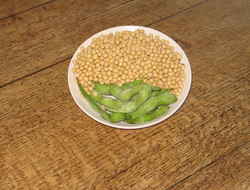Soy and soy products: Dietary staples or dietary pariahs?
Published: June 14, 2019
Soy and soy products have been a familiar sight on supermarket shelves for decades and the less processed forms of soy have been part of traditional diets for centuries.
This is particularly true for societies in which vegan or vegetarian diets are favoured.
Overtime, observational research studies seem to suggest that there may be health benefits associated with soy consumption.
Various studies in animals and humans have provided some evidence to support this association.
However, against these positive findings are reports that the consumption of soy and soy products rather than bringing health benefits, is associated with adverse health effects such as:
- increased risk of breast cancer
- loss of thyroid function
- loss of fertility and decreased testosterone levels in men
- increase in cognitive decline
- reduction in nutrient intake
A look at soy’s historical background, nutrient component and nutritional health research may shed light on knowledge discrepancies that abound and help you make informed decisions about your consumption of soy and soy products.
Soy, or more precisely the soy (soya) bean (Glycine max) is a native legume/pulse of East Asia, although it may also be classified as an oil seed.
Soy beans are the seeds of the soy plant and develop in pods.
Immature pods with about 4 seeds (beans) in each pod are known as edamame and used as a vegetable in Asian cuisine.
Soy beans are now cultivated throughout the world and soy products have become popular in Western cultures as alternatives to meat and dairy products.
Nutrient content
As with other legumes, the protein content of soy beans is high relative to other plant foods.
This is in part due to symbiotic nitrogen fixing bacteria (Rhizobia) which exist within the nodules of root systems of many legumes.
The root nodules are a source of nitrogen which is necessary for amino acid synthesis. Readily available nitrogen allows for adequate amino acid synthesis and the synthesis of various proteins.
In addition to the relatively high protein content, soy protein compares well to animal protein with respect to its essential amino acid content.
Most plant proteins are limited with respect to one or two essential amino acids.
Soy as a legume is somewhat limited in methionine and tryptophan, but not to the extent that the quality of soy protein is affected and soy is considered to be a useful... link to the full article to learn more about soy and soy products.
References
1.
Whitney, E. & Rady Rolfes, S. (2005). Understanding Nutrition. Belmont, CA: Thomson Wadsworth
2.
Centre for Science in the Public Interest (September 2014, October 2011, November 2011, March 2010)

